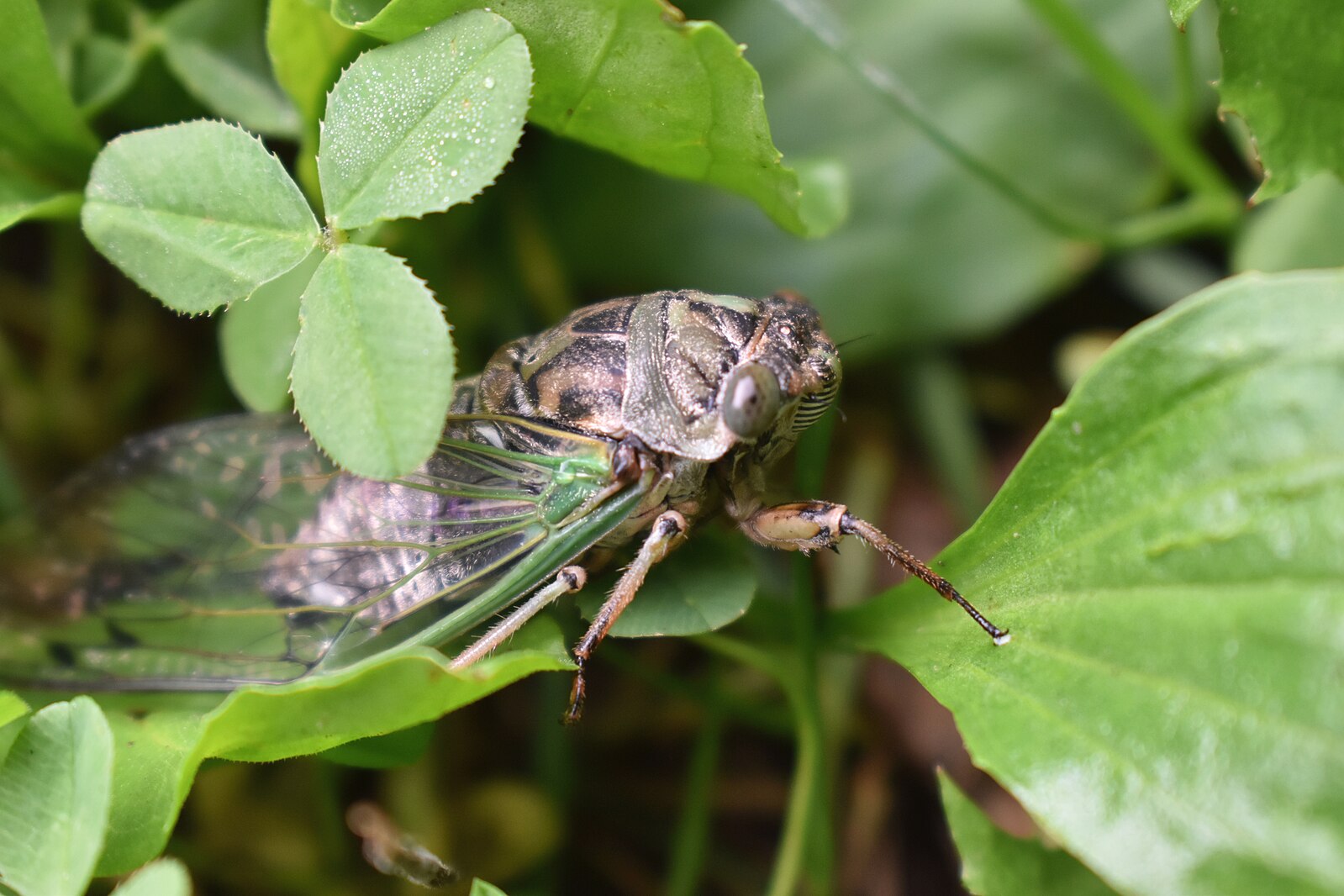
A dog-day cicada. Photo by John Stockla, CC BY-SA 4.0, via Wikimedia Commons
Around mid-August, Molly Keck, an entomologist for the Texas AgriLife Extension Program in Bexar County, receives a lot of calls about cicadas. More specifically, their lifeless remains. “People get worried thinking something bad is happening,” Keck says. What’s happening, she notes, “is disconcerting, but normal.” The insects that filled the trees of Texas with their mating calls during summer have come to the end of their short adult lives.
Right now, we are witnessing the last days of peak cicada season. There are some stragglers that continue to emerge, and with them come their shrill call—a song that strikes some ears as cacophonous, but for others it provides a resonant soundtrack to the hot Texas summer. Even the entomologist Stanley Bromley noticed the insects’ choruses as he traveled along the Navasota and Trinity rivers in 1933, pronouncing Texas “a veritable cicada paradise.”
Appearing in the fossil record as early as the Triassic Period, cicadas, whose nearest relatives include “true bugs” (which include aphids), have been a fixture in the imaginations and lives of humans from Australia and Japan to the Mediterranean and Mexico. Texas has long been a crossroads for North and South American cicadas that can be found as far afield as Nova Scotia and Argentina—as well as home to species endemic to the state.
Within earshot of many Central Texans, superb dog-day cicadas (neotibicen superbus) resting on live oak and cedar branches belt out a low-pitched teh-teh-teh-teh before jumping an octave to the rattling sounds of an amped rainmaker. In south Texas, the giant cicada (quesada gigas), also known as la chicharra, issues the xylophone-pitched cheh-cheh-cheh before blaring like a tea kettle at boil. Each species has its own mating song, contributing to Texas’ sonic richness. “To the cicada hunter,” wrote entomologist Ernest Tinkham in 1941, “the note of each species is as distinctive as the songs of various warblers are to ornithologists.”
The cicadas that Texans hear in the summertime are in the prime of their lives, but that prime is short. Cicadas spend more of their lives below ground than they do in the trees. For only two months, cicadas live as fully fledged adults, singing, mating, and laying eggs on the trees and shrubs that sheltered them. After the adults die off, their nymphs hatch from the eggs, drop to the ground, and burrow in the earth. For one to four years (depending on the species), the nymphs remain underground, feeding on tree root sap. (The outermost edges of northeast Texas are home to the periodic cicada, which burrows for periods of either 13 or 17 years.) Once they reach maturity and the soil warms up, cicadas slowly dig themselves out of the earth and climb up trees to, in Keck’s words, “find a mate, reproduce, and die off.”
When we hear cicadas, we are hearing the males’ mating call. They sing by vibrating tymbals—flaps in their midriff resembling the taut cover of a drum. By flexing these muscles, the male cicada amplifies his call to nearly 100 decibels when heard from a yard away—enough to cause hearing damage to human observers. Curiously, the loudness of the males’ songs has little effect on attracting female cicadas, because they cannot process loud noises. The males are also oblivious to the din and cannot hear their own song.
Also curious is it’s harder to spot a live cicada than it is to hear one. Cicadas are the sloths of insects, occasionally flitting from branch to branch. Texans are more likely to encounter cicadas’ predators, the cicada killer wasp (only threatening to cicadas), and the venomous copperhead snake (which will pursue its quarry into the trees). Spotting the dry, brown exoskeletons of dead adults provides solid evidence of the insects’ short-lived maturity.
The hot, dry Texas summers of 2022 and 2023 have been full of telltale signs of cicadas: the males’ songs, the desiccated exoskeletons, and their predators. Yet, despite the extreme weather of the last three years, Texas cicadas have prospered—albeit earlier than usual. “The hot summers just shift the time frame; the cicadas come out sooner,” Keck says. “It’s when the soil temperatures get hot enough that they start to emerge. But the amount of cicadas remains the same.”
So long as drought does not cripple the tree roots upon which the nymphs rely for food, cicadas will emerge and sing their songs of summer. And if drought wreaks havoc on Texas’ trees, Keck adds, “we’ll have a much bigger problem to deal with.”








